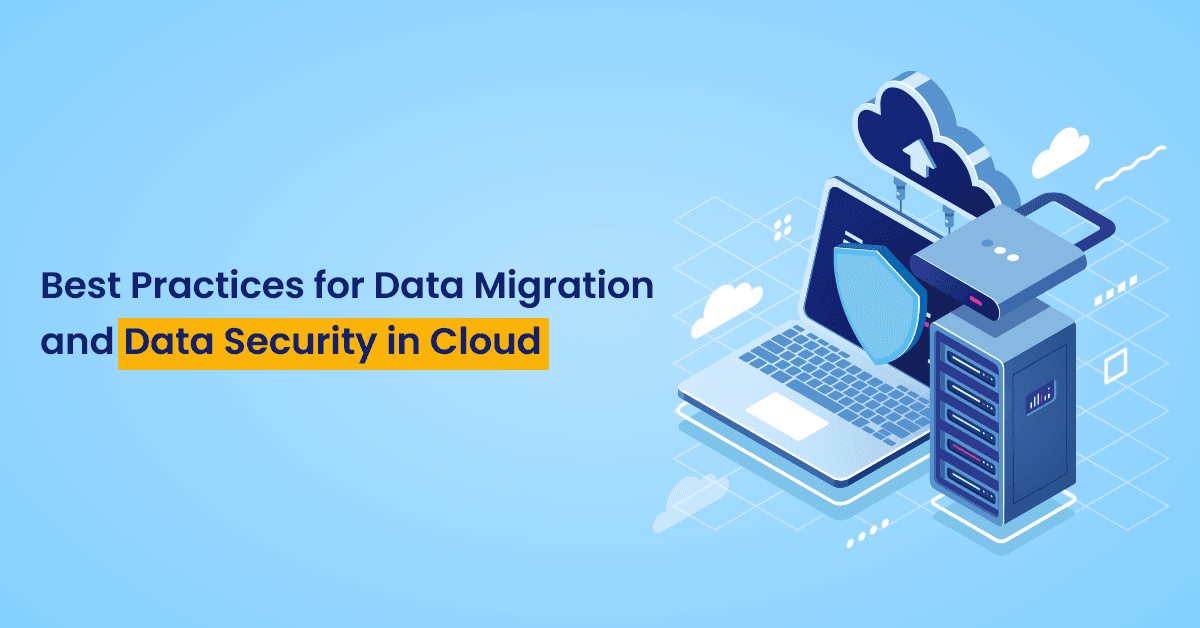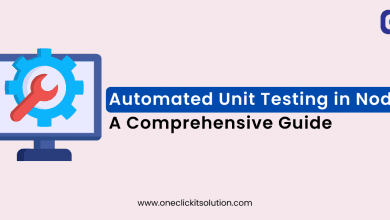7 Best Practices for Data Migration and Data Security in Cloud

Overview of Data Migration and Data Security in Cloud
According to a study by IDG, an American magazine publisher specializing in computer technologies in the enterprise cloud market, 77% of companies now have at least one application, or part of their IT infrastructure, on the Cloud. With the digital transformation, more and more companies are in favor of dematerialized documents. It must be said that the Cloud has many advantages: immediate availability of documents, dynamic filing, access from any device (smartphone, PC, tablet, etc.), monitoring of changes, etc. And to take full advantage of it, it is essential to data security in Cloud.
What Do We Mean by Cloud Data Security?
Cloud security refers to protecting the integrity of applications, data, and virtual infrastructure hosted in the cloud. This term applies to all cloud deployment models (public, private, hybrid, multi-cloud) and all types of on-demand services and solutions (IaaS, PaaS, SaaS) in the cloud. Generally speaking, in the context of cloud services, the cloud provider has the responsibility for securing the underlying infrastructure, while the customer is responsible for securing the applications and data in the cloud.
Workloads in the Cloud are Vulnerable to a Variety of Threats
Cloud assets and workloads are exposed to a wide range of cybersecurity threats, including data breaches, ransomware, DDoS attacks, and phishing attacks. Cybercriminals can exploit security vulnerabilities in the cloud, using stolen credentials or compromised applications to launch attacks, disrupt services or steal sensitive data. The reliability of cloud security systems and practices is essential to maintain the availability of critical business applications, protect confidential information, and ensure regulatory compliance.

A Prerequisite & Diagnosis of Data Security
Cloud security means adopting new practices. But it is also the realization of a diagnosis, concerning the state of its computer system – what are the vulnerabilities? What constraints weigh on a daily basis? How to optimize performance and master cybersecurity issues? This will allow you to take stock of the situation and define the right measures to put in place in order to secure all of your data in the Cloud.
Best Practices of Data Migration and Data Security in Cloud
1. Define Several Access Levels According to the Profiles
Cloud providers have a logical mission: to offer access to cloud-based data storage tools. But it is not up to them to define the policy that the company will pursue in this area. In fact, it is up to the organization to put in place the right rules to guarantee data access and data security. Thus, it is essential to define several levels of access:
- Addition of documents, consultation, and modification;
- Modification and consultation of documents;
- Consultation of documents only.
In addition, the Cloud must be “silled”. In fact, not all employees are intended to access all documents – and this is all the more true when access to the Cloud is offered to external service providers. Care should, therefore, be taken to open certain files only to the right people.
2. Conduct Vulnerability Tests
Whether you have opted for an in-house cloud solution or a solution offered by a third-party supplier, you should not neglect vulnerability testing. These, also called penetration tests, will simulate the behavior of a third party, whether it is a real person or a robot, who will try to enter your computer system, without any prior knowledge of it.
The goal? Detect and highlight the flaws that weigh, by extension, on the company’s Cloud. The vulnerability tests should then be followed by corrective actions.
3. Secure Administrator Accounts for SaaS Applications
Each SaaS product includes a management console for administering users and services. SaaS administrator accounts are frequently targeted by hackers and cybercriminals. Customers should control and monitor SaaS administration console access privileges to ensure SaaS security and reduce risk.
4. Opt for a Private Cloud
There are many so-called general public Cloud solutions – Google Drive, OneDrive, Dropbox. However, these are not recommended for enterprises that deal with highly secure data. Indeed, it is preferable to choose a private solution or opt for cloud based application development service, which will provide you with the security, control and traceability essential to companies. You will thus have full control over your data hosted in the Cloud, and full access to it. You can even offer your customers a secure connection so that they too can enrich this collaborative data center!
Read More: Oracle Database 21C Takes on Cloud with APEX
5. Do Not Neglect Antivirus on Employee Workstations
The best security of a Cloud solution starts on the workstations of employees. In fact, a virus present in a file that would not be detected by the computers installed in the company could infect all the data present in the Cloud and all the PCs of those who access it. It is, therefore, recommended to ensure that anti-virus software and employee firewalls are up to date and ready to identify the slightest threat to data integrity.
6. Optimize Passwords
The security of a cloud in a company starts with employee passwords, which are too often neglected. It is, therefore, advisable to choose strong passwords. They must meet the following characteristics:
- More than ten characters;
- With some special characters, like @ or # for example, and uppercase letters;
- Do not form readable words, such as “the password”;
- Be changed regularly;
- Be unique, that is to say not have been used for other applications (email account in particular)
7. Secure the Code of the DevOps Pipeline
Attackers can also attempt to exploit vulnerabilities in cloud applications throughout the development and distribution pipeline. Developers often hard-code security identifiers in source code stored on shared storage or public repositories. In the wrong hands, app credentials can be used to steal proprietary information or wreak havoc. Customers should remove secrets from source codes and institute systems and practices to automatically monitor and control access as part of a settlement.

To Conclude
Switching from traditional resources to cloud resources offers substantial benefits to businesses of all sizes. However, it is imperative to secure the public cloud to protect your infrastructure and business against cyberattacks. Following the 7 steps of this guide, you will optimize the security of your public clouds while simplifying security management and compliance reporting.
Also, if you are planning for data Migration techniques in Cloud Computing or looking for Customized Cloud Application Development Services, contact us. Our team specializes in offering intelligent, highly secure, and affordable solutions for AWS environments.





